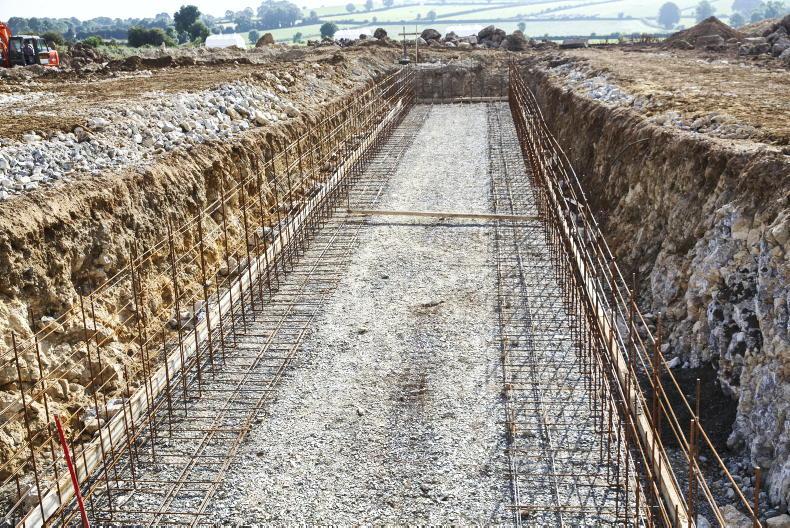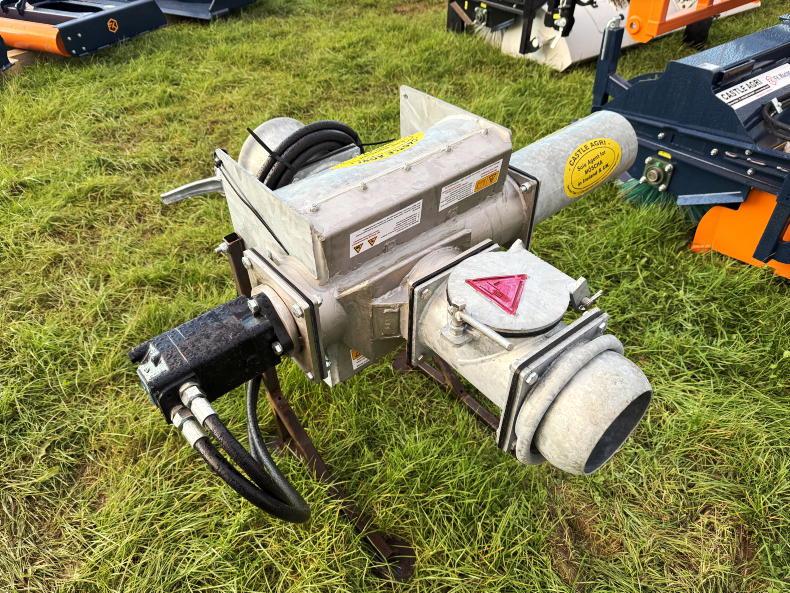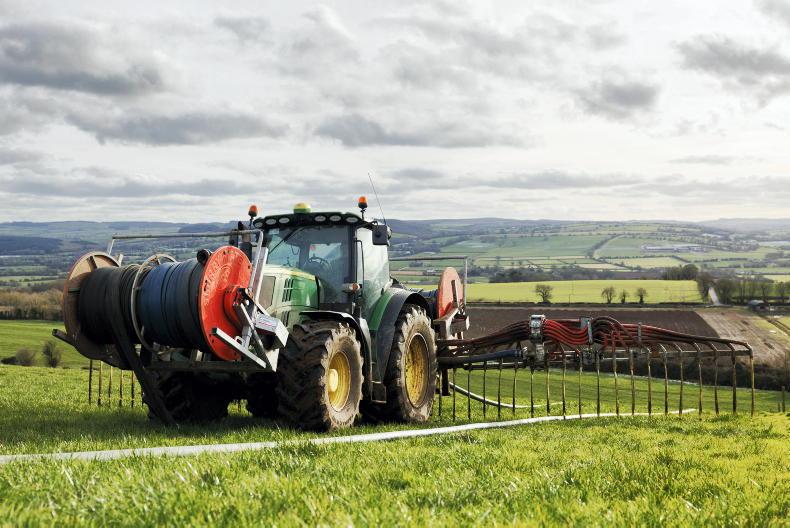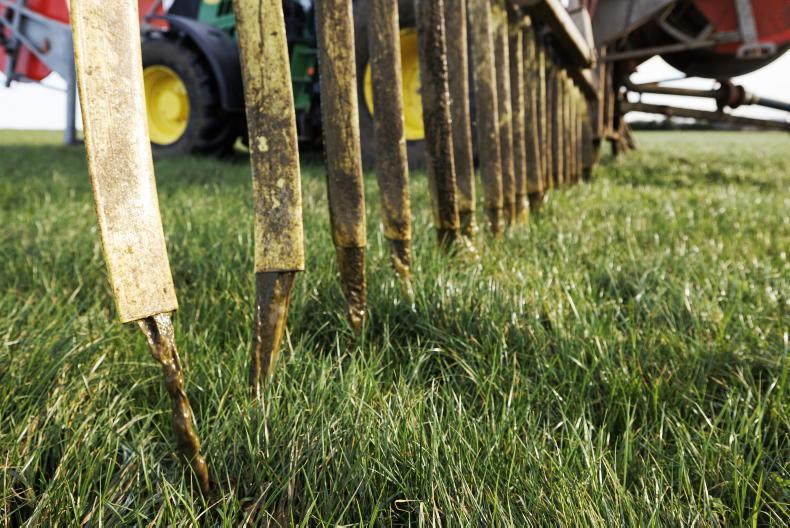For many years, optional equipment on slurry tankers was rather limited.
Nowadays, like most modern machinery, the options list is practically endless.
However, there are now a number of options we would consider important on a new slurry tanker fitted with a LESS system, some of which are from a practical perspective while others ease and improve operator experience.
So, if you’re in the market for a new slurry tanker, then have a look at some of the specification we deem important outlined below.
Depending on the manufacturer, the term ‘standard’ specification will likely differ. So, it is worth bearing this in mind when shopping around and to properly compare like of like.
Discuss with your dealer what is and is not standard specification.
A front sight tube is fairly self-explanatory. With the traditional splash plate, it was clearly visible when the tanker was nearing empty.
With dribble bars and more so trailing shoe/injection systems, it is practically impossible to visually see when the tanker has emptied. With a sight tube, the remaining volume can be quickly identified. In the event that it is not standard, a slight tube will cost in the region of €700 plus VAT extra.
A side-access hatch is one of them options you like to have but hope not to use.
We consider it important for two reasons mainly.
Firstly, dribble bars and trailing shoes occupy the rear door, which used to be easily accessible in the era of the splash plate.
To access the inside of a slurry tanker where there is no side hatch fitted means removing the LESS system, which is not a straightforward procedure.
Secondly, the large outlet on splash plate tended to be quite forgiving in the size of objects that could pass through without causing harm.
While LESS systems are generally fitted with stone traps, these can quickly fill with silt, stones and other foreign objects which may then enter the macerator unit, if not emptied in time.
Otherwise, this debris and silt may just remain at the bottom of the tanker and eventually require cleaning out.
A side-access hatch makes the process much easier. Prices for a side hatch will typically cost €1,000 to €1,100 plus VAT extra.

A side-access hatch is well worth having on tankers fitted LESS systems in the case debris needs to be removed from inside the tanker.
A stone trap is used for the collection of stones and should be positioned in such a way that stones have to pass over and fall into the trap where they are retained until manually emptied.
Most LESS systems have their own stone trap. However, an additional one on the slurry tanker is worth having.
Stone traps should be emptied on a regular basis when a tanker is in operation.
This will prevent the possibility of large stones or debris entering the macerator and causing damage.
Effective stone traps will likely reduce the need to open the side access hatch or rear door to remove debris.
A stone trap will general cost €600 plus VAT to have fitted. 
A sight tube is a must if a tanker is fitted with a LESS system.
A wide-angle shaft is one of those options that you may regret not opting for rather than the other way around.
Such an option will cost in the region of €600 plus VAT more than a standard shaft, which is a small percentage of the overall buying price of the tanker and LESS system.
It means that the PTO can be left engaged when spreading and full concentration can be given to the rear trailing shoe or dribble bar. In tight or compact farmyards, a wide-angle shaft eliminates the need to have the tractor and tanker straight for filling. 
The wide-angle shaft leaves both filling and spreading much easier.
Functional and visible lights are critically important, especially as more farms become fragmented resulting in machinery spending more time on the road.
Most manufacturers offer an optional set of high-mounted road lights, which are up and out of harm’s way and a good backup if the lower set gets damaged.
Beacons, amber strobes and work lights are further lighting options worth considering.
A rear-view camera might be yet another option to consider or potentially retrofitted at a later stage.
Camera kits can be picked up for between €250 and €300. 
Optional lighting packages are worth while if the tanker will spend considerable time on the public road.
Most farmer-spec slurry tankers between 1,600-gallon and 2,600-gallon will be fitted on 750mm (28.1) or 800mm (30.5) tyres. Where possible, especially if fitted with a LESS system, our advice would be to opt for the latter 800mm option, which generally tend to be rated for higher load ratings.
The move from 750mm to 800mm tyres will be between €1,800 and €2,200, plus VAT, which breaks down to a reasonably small amount over their working life leaving aside the benefits to the soil. Anything larger, such as 900mm tyres, will tend to be a special order as the chassis and barrel may need to be modified to accommodate the additional width.
The move from 800mm tyres to 900mm will range between €1,500 and €2,000, plus VAT, for wheels alone. 
Consider wider tyres, especially the move from 750mm to 800mm.
Although additional fill points can be added any time once blank mounting points have been fitted, consider having them fitted from factory.
With a LESS system on the back, man holes may not be as easily accessed as they were before, so our advice would be opt for at least two fill points and or ensure blanking plates are left on the tanker for their fitment at a later stage.
Additional fill points tend to cost in the region of €450 plus VAT each.
Additional fill points are well worth the extra money, especially around tight yards.
Other options to consider
There are numerous other options that you may consider important or worth having.
One of which may be air over hydraulic brakes in order to leave your tanker future proof if there are plans to upgrade the farm tractor at some point.
Another is a swivel hitch, which is designed to allow the tanker to follow the tractor better and create less wear on the towing hook. Some customers, more so contractors are opting to fit the ball and spoon-type hitches.
Compared with traditional ring and hook type hitches, the ball and spoon eliminates shunting and offer up to 90% less wear.
The options are endless, but some other popular additions include a hydraulic drive vacuum pump, hydraulic changeover for switching between vacuum and spreading modes, vacuum pump silencer, auto-fill and a stepped axle to help ensure a low centre of gravity. 
A ball-and-spoon hitch offers up to 90% less wear compared with the traditional eye and hook type.

Air over hydraulic brakes tend to leave the tanker more futureproof.
For many years, optional equipment on slurry tankers was rather limited.
Nowadays, like most modern machinery, the options list is practically endless.
However, there are now a number of options we would consider important on a new slurry tanker fitted with a LESS system, some of which are from a practical perspective while others ease and improve operator experience.
So, if you’re in the market for a new slurry tanker, then have a look at some of the specification we deem important outlined below.
Depending on the manufacturer, the term ‘standard’ specification will likely differ. So, it is worth bearing this in mind when shopping around and to properly compare like of like.
Discuss with your dealer what is and is not standard specification.
A front sight tube is fairly self-explanatory. With the traditional splash plate, it was clearly visible when the tanker was nearing empty.
With dribble bars and more so trailing shoe/injection systems, it is practically impossible to visually see when the tanker has emptied. With a sight tube, the remaining volume can be quickly identified. In the event that it is not standard, a slight tube will cost in the region of €700 plus VAT extra.
A side-access hatch is one of them options you like to have but hope not to use.
We consider it important for two reasons mainly.
Firstly, dribble bars and trailing shoes occupy the rear door, which used to be easily accessible in the era of the splash plate.
To access the inside of a slurry tanker where there is no side hatch fitted means removing the LESS system, which is not a straightforward procedure.
Secondly, the large outlet on splash plate tended to be quite forgiving in the size of objects that could pass through without causing harm.
While LESS systems are generally fitted with stone traps, these can quickly fill with silt, stones and other foreign objects which may then enter the macerator unit, if not emptied in time.
Otherwise, this debris and silt may just remain at the bottom of the tanker and eventually require cleaning out.
A side-access hatch makes the process much easier. Prices for a side hatch will typically cost €1,000 to €1,100 plus VAT extra.

A side-access hatch is well worth having on tankers fitted LESS systems in the case debris needs to be removed from inside the tanker.
A stone trap is used for the collection of stones and should be positioned in such a way that stones have to pass over and fall into the trap where they are retained until manually emptied.
Most LESS systems have their own stone trap. However, an additional one on the slurry tanker is worth having.
Stone traps should be emptied on a regular basis when a tanker is in operation.
This will prevent the possibility of large stones or debris entering the macerator and causing damage.
Effective stone traps will likely reduce the need to open the side access hatch or rear door to remove debris.
A stone trap will general cost €600 plus VAT to have fitted. 
A sight tube is a must if a tanker is fitted with a LESS system.
A wide-angle shaft is one of those options that you may regret not opting for rather than the other way around.
Such an option will cost in the region of €600 plus VAT more than a standard shaft, which is a small percentage of the overall buying price of the tanker and LESS system.
It means that the PTO can be left engaged when spreading and full concentration can be given to the rear trailing shoe or dribble bar. In tight or compact farmyards, a wide-angle shaft eliminates the need to have the tractor and tanker straight for filling. 
The wide-angle shaft leaves both filling and spreading much easier.
Functional and visible lights are critically important, especially as more farms become fragmented resulting in machinery spending more time on the road.
Most manufacturers offer an optional set of high-mounted road lights, which are up and out of harm’s way and a good backup if the lower set gets damaged.
Beacons, amber strobes and work lights are further lighting options worth considering.
A rear-view camera might be yet another option to consider or potentially retrofitted at a later stage.
Camera kits can be picked up for between €250 and €300. 
Optional lighting packages are worth while if the tanker will spend considerable time on the public road.
Most farmer-spec slurry tankers between 1,600-gallon and 2,600-gallon will be fitted on 750mm (28.1) or 800mm (30.5) tyres. Where possible, especially if fitted with a LESS system, our advice would be to opt for the latter 800mm option, which generally tend to be rated for higher load ratings.
The move from 750mm to 800mm tyres will be between €1,800 and €2,200, plus VAT, which breaks down to a reasonably small amount over their working life leaving aside the benefits to the soil. Anything larger, such as 900mm tyres, will tend to be a special order as the chassis and barrel may need to be modified to accommodate the additional width.
The move from 800mm tyres to 900mm will range between €1,500 and €2,000, plus VAT, for wheels alone. 
Consider wider tyres, especially the move from 750mm to 800mm.
Although additional fill points can be added any time once blank mounting points have been fitted, consider having them fitted from factory.
With a LESS system on the back, man holes may not be as easily accessed as they were before, so our advice would be opt for at least two fill points and or ensure blanking plates are left on the tanker for their fitment at a later stage.
Additional fill points tend to cost in the region of €450 plus VAT each.
Additional fill points are well worth the extra money, especially around tight yards.
Other options to consider
There are numerous other options that you may consider important or worth having.
One of which may be air over hydraulic brakes in order to leave your tanker future proof if there are plans to upgrade the farm tractor at some point.
Another is a swivel hitch, which is designed to allow the tanker to follow the tractor better and create less wear on the towing hook. Some customers, more so contractors are opting to fit the ball and spoon-type hitches.
Compared with traditional ring and hook type hitches, the ball and spoon eliminates shunting and offer up to 90% less wear.
The options are endless, but some other popular additions include a hydraulic drive vacuum pump, hydraulic changeover for switching between vacuum and spreading modes, vacuum pump silencer, auto-fill and a stepped axle to help ensure a low centre of gravity. 
A ball-and-spoon hitch offers up to 90% less wear compared with the traditional eye and hook type.

Air over hydraulic brakes tend to leave the tanker more futureproof.


















SHARING OPTIONS